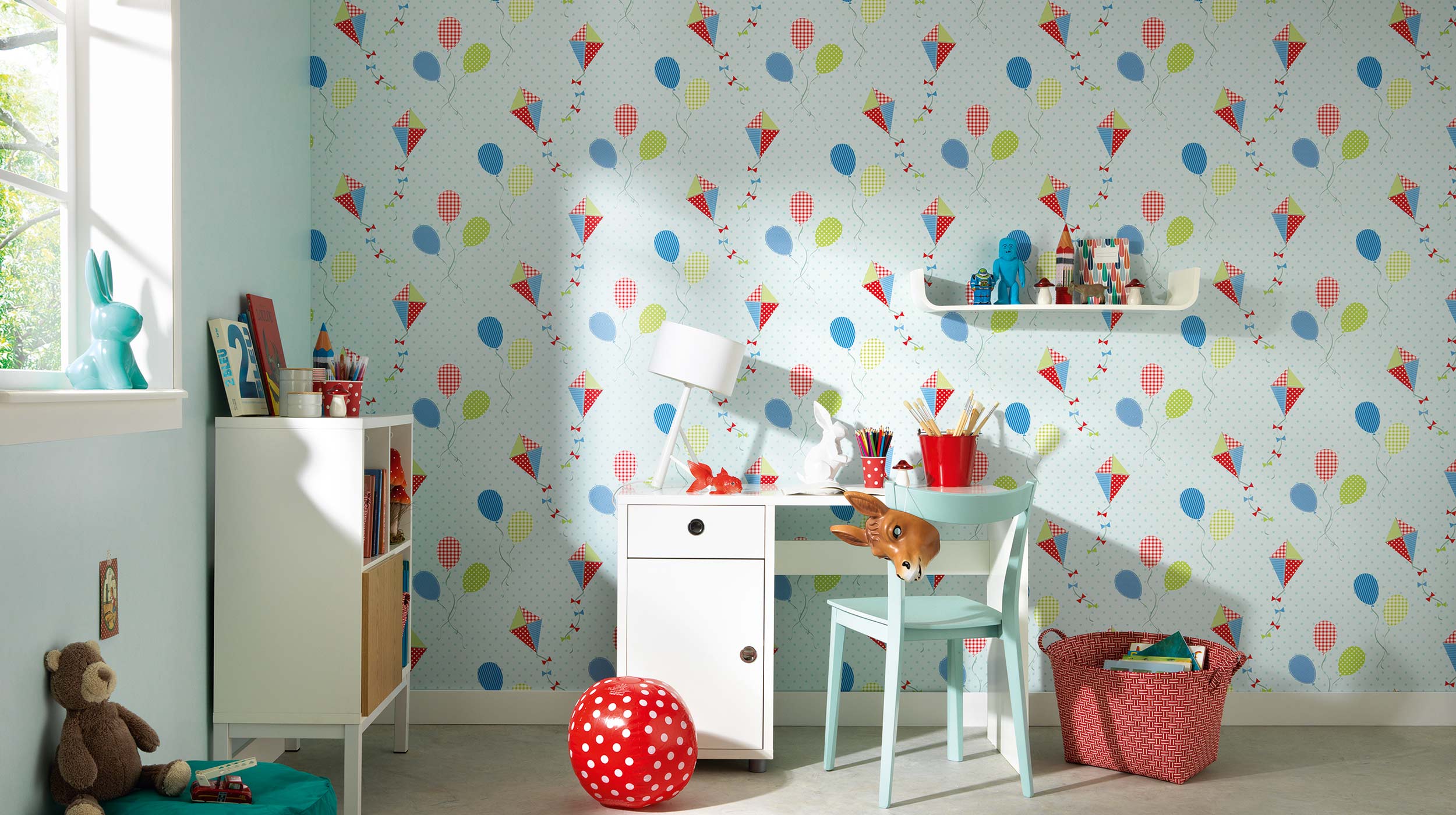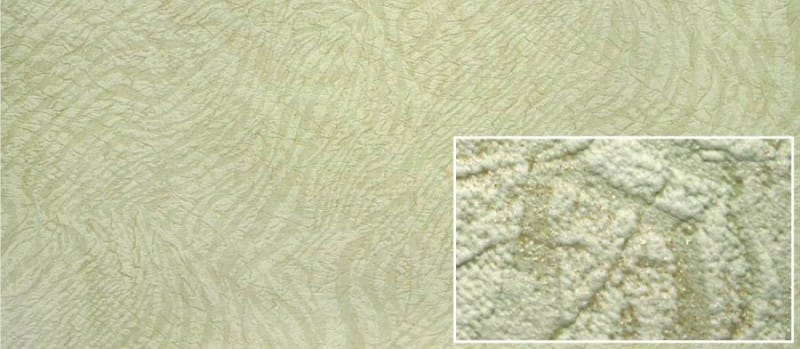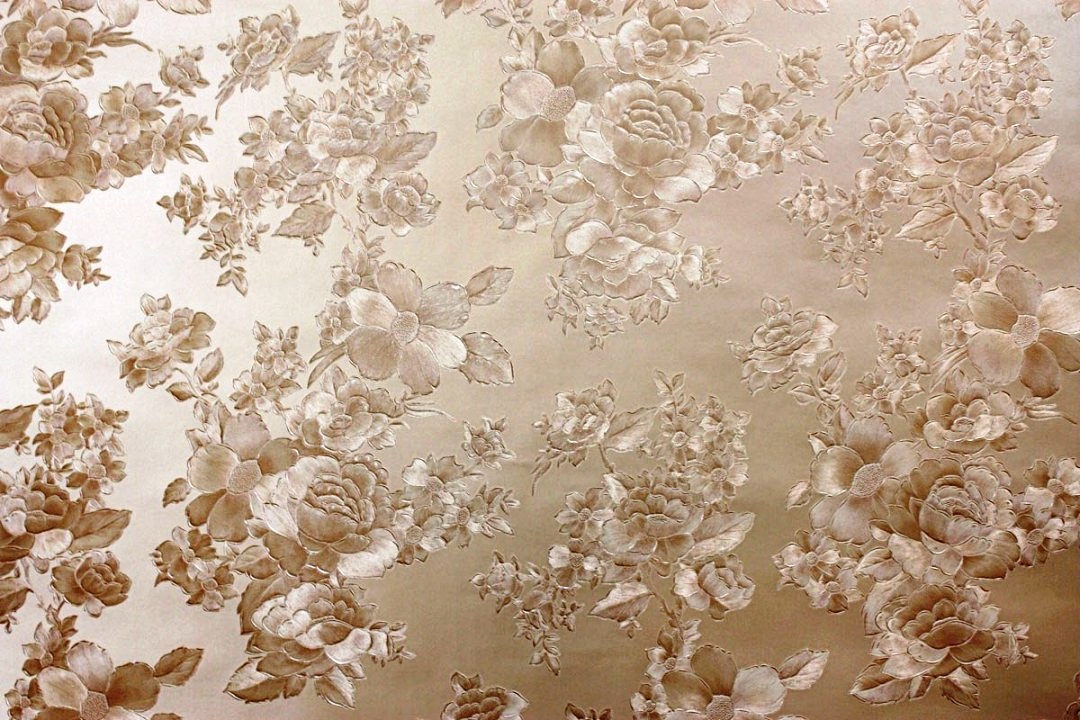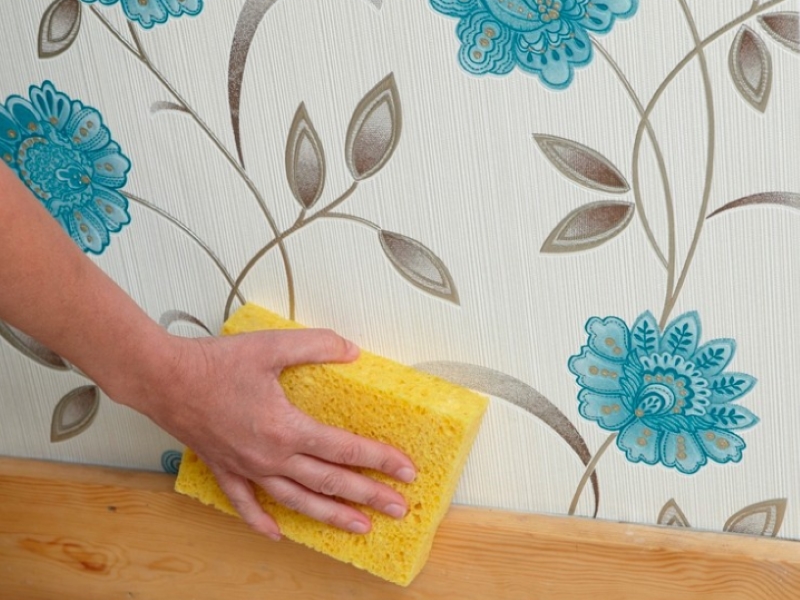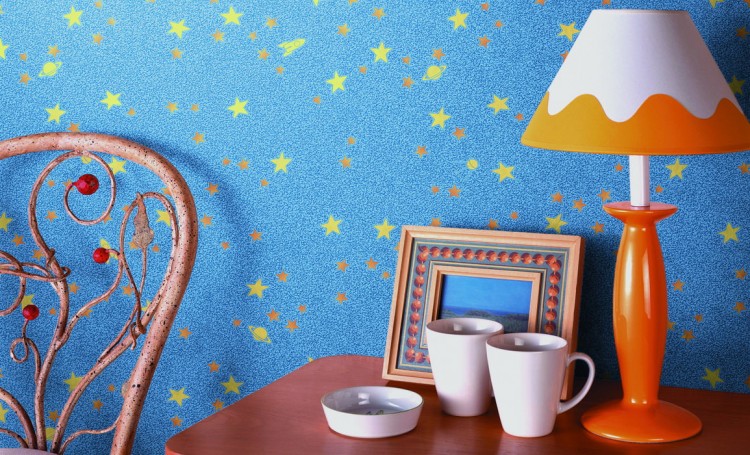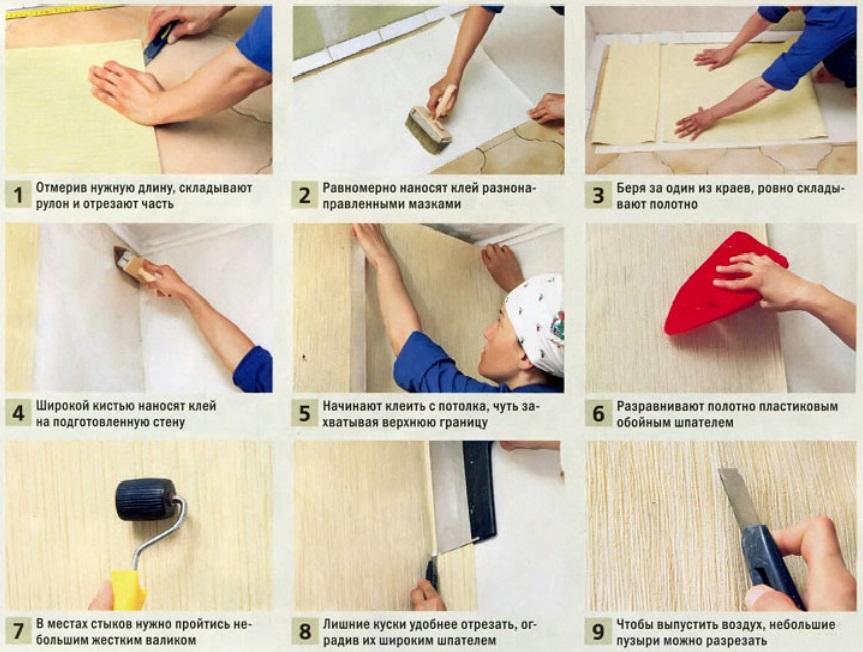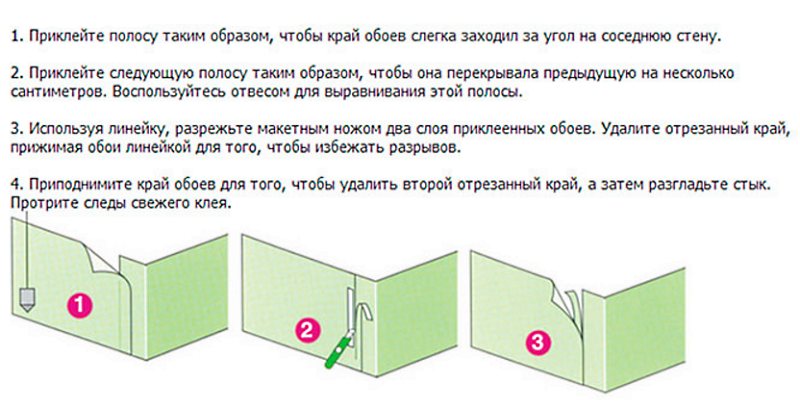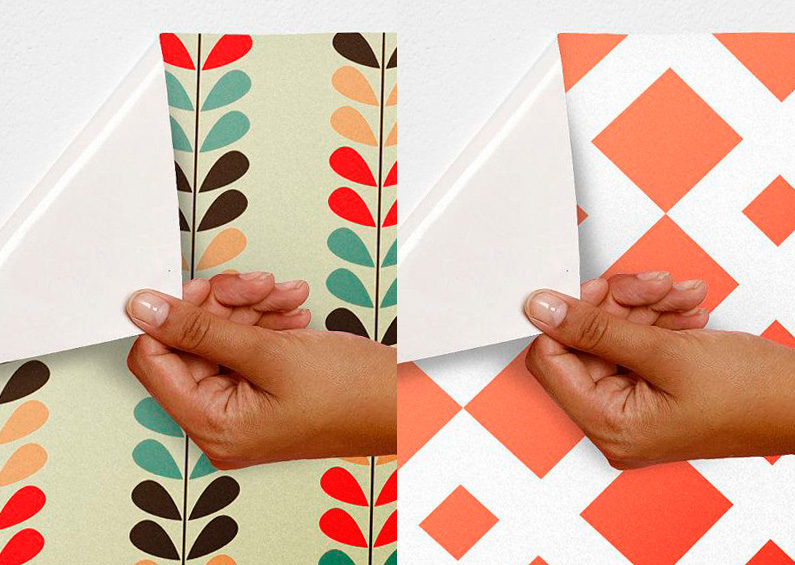The most common material for finishing living spaces are wallpapers. They are loved for a variety of designs and textures. There are different types of wallpaper and in their pasting there are nuances. About what kind of wallpaper there are, and how to glue them in this article.
Content
Types of wallpaper for walls
The wallpaper is quite a versatile material for decoration. They can be combined and glued to walls in almost any room. According to the material of manufacture, they are subdivided:
Paper - are made of thick paper. They are natural and perfect for finishing children's rooms. In turn, they can be divided into subspecies:
- structural;
- embossed;
- smooth;
- photo wallpaper.
They are easy to use and beautiful. By combining different drawings and textures, you can make an interesting design of the room.
Non-woven fleece gloves wallpaper is made of cellulose and is a non-woven fabric bonded with a polymer. By their composition, they are close to paper. Sometimes you can even hear that nonwoven fabric is a more refined paper. Most often they go under painting. Their surface has a different texture, imitating different surfaces. These wallpapers can be repainted several times. Such wallpaper can be both from nonwoven, and with application of the top layer. Non-woven wallpaper is a good option for living quarters. They have a number of positive qualities:
- dense base allows to smooth out small wall defects;
- resistance to fire;
- allow the walls to breathe thanks to a light texture;
- easy to glue, without deforming at the same time;
- do not absorb the dust;
- easy to clean with a damp cloth or vacuum cleaner;
- the damaged area can be easily restored by painting it with the same color.
The only thing to remember is that they are tender enough and can be damaged by mechanical stress. So you have to be careful.
Vinyl wallpapers can be called a flizeline variety. They are made of two layers:
- paper or non-woven fabric;
- a cover from polyvinylchloride.
And models with a paper base will be cheaper. This variety of wallpaper has a number of advantages:
- the strength at gluing is impossible to tear;
- durability, this material can last up to 10 years;
- universality, they can be fashionably chosen for any style of interior;
- moisture resistance, it allows you to apply them in the kitchen and clean using detergents.
In addition to the advantages of such wallpapers there are disadvantages:
- allocation of harmful substances;
- do not pass air;
- shrinkage upon drying;
- are hard at work.
Indeed, for gluing the two-layer material, skill is needed. And in the absence of experience it is best to seek professional help. The vinyl wallpaper is divided into several types:
Structural with foamed vinyl have a loose structure. A rich palette of colors and with the interspersing of sequins makes this variety attractive. They are recommended to glue in rooms with uneven walls. In addition, they are perfectly glued to wood, chipboard, etc.
Hot stamping wallpapers. They can be fashionably divided into light and heavy. The first have a very dense structure and perfectly hide the unevenness of the wall. The second is an excellent option for design, because are issued with the texture imitating a tree, a brick and other coverings. They have high strength and will last for many years.
Silkscreen by right can be considered the most beautiful species. The upper layer of the material contains silk threads, which gives the fabric a noble chic. They can be smooth, monophonic or with patterns. They will look great both in the corridor and in the living room. Strength to damage and abrasion makes it possible to serve about 8-10 years of bottom material.
Washable wallpaper A great option for decorating walls in the kitchen and bathroom. They can be easily washed thanks to several top layers of:
- polyvinyl chloride;
- a plasticizer;
- stabilizer, etc.
Hard vinyl or as it is also called steamed. Such wallpaper consist of three layers of paper and evaporated polyvinyl chloride. Those. It removes toxic substances that can evaporate and affect human health. Therefore, they are safe and can be used even in the children's room.
How to glue non-woven wallpaper
Glue the wallpaper data carefully. It should be taken into account that the material is thin and in the absence of the top layer or its small thickness, the wall can shine through them. Better before putting it on, turn on the light and attach the wallpaper to the wall. After that, look carefully if it does not shine through the surface of the latter. If the wall is not visible it's good.
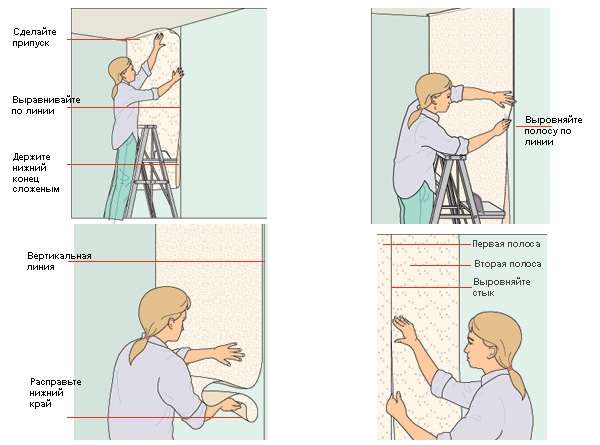
Otherwise, you will need to align the tone of the cover. Adhesive fleece wallpaper with special glue. It is transparent and does not give yellowness on drying. The glue must be applied to the wall. The wallpaper does not smear. It is convenient, it is not necessary to cover or wipe the floors from the adhesive after each strip of material. To select the glue and the calculation, pay attention to the information on the roll itself. Many manufacturers produce glue and indicate its quantity for work. You can contact the store's consultants, they will certainly help with the choice and calculation of the quantity.
How to glue vinyl wallpaper
Vinyl wallpaper can be on non-woven or paper basis. Depending on this, there are nuances of their pasting. So the material on non-woven base does not shrink, so it is necessary to glue the joint into the joint. The wallpaper itself does not need to be smeared with glue, they are covered with a wall and a strip of material is applied. Start to glue best from the window and at the same time use the plumb line. This will help to glue exactly against the walls. If the base of the material is dense and the wallpaper itself is heavy enough with glue, they also cover them. This will allow them to securely fix on the surface of the wall. When gluing material with a paper base, the glue must be applied to a sheet of material and allow it to lie down for a while. And carefully study the label of the wallpaper, there will be indicated the time of swelling. After holding this period, you can glue the canvas to the wall, gently smoothing it with a special roller or rubber spatula.
How to glue a paper wallpaper
Before gluing paper wallpaper you need to prepare the walls. We clean them from the old coating, if necessary smooth out the irregularities with putty and ground the surface.
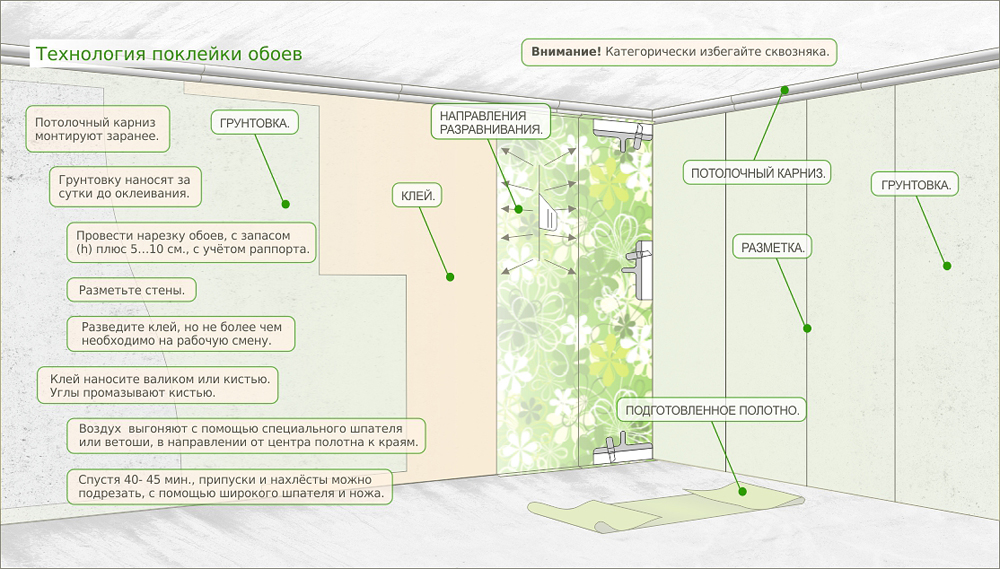
After that, turn off the electricity in the apartment and remove the covers from the switches and outlets. If possible, you can remove the plinth. Plus paper wallpapers is their susceptibility to any glue. Buy any, do not go wrong. If you need glue, but there is no way to buy wallpaper paste, you can make a paste. To do this, connect the water with flour and bring to a boil. After that, we cool and start to work. If you have a thick wallpaper, you can paste them with a warm paste. If you look closely at the roll, you can see the white edge that goes on top and sides of the main canvas (maybe only on one side). If there is an edge, it is fashionable to glue the stripes overlapping. Start the pasting from the window and move to the right. We measure the height of the room from floor to ceiling and for this size we cut the roll. Trimming the wallpaper is best with a stationery knife. When gluing walls with sockets and switches, it is necessary to mark them on the strip. To do this, we apply it to the wall and at the location we make a cross-shaped cut. After gluing this fragment, the corners are neatly trimmed. Pokleit wallpaper is simple, accurately and accurately measure the dimensions and slowly begin to work.
How to glue wallpaper in corners
The most not a simple moment in the process of pasting is the docking of wallpaper in the corners of the room. First you need to align the corners. For this, you can use special plastic corners, which are attached to the putty.
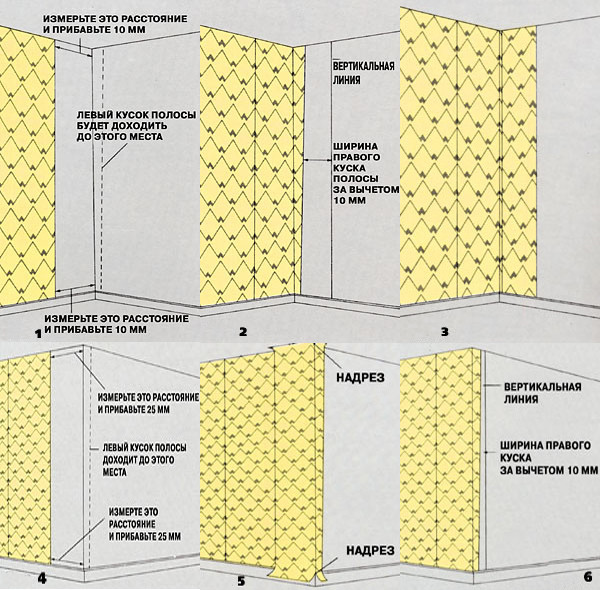
After the corner is aligned, you can proceed to paste the wallpaper. And we must take into account that the width of the overlap should not exceed 10-15 mm. Angles are internal and external, and in each case there are nuances. When gluing the inner corner, you need to measure the distance from the last glued strip to the corner. After that, cut the strip of wallpaper more by 15 mm of the measured width. After applying the glue on the canvas and the wall and glue the canvas so that part of the cloth went to the adjacent wall. The next strip should be glued by cutting off from it a strip of width equal to the overlap. Align the joint by the plumb line. After drying, it will be invisible. Sealing external corners is similar to internal ones. With the difference that the overlap is 20-25 mm.
Wallpaper on an adhesive basis
Recently, quite often in the decoration apply wallpaper on the adhesive basis. The material is a plinth of the front and the underside. And on the wrong side the adhesive base is covered with special paper. Such material is easy to use and the process takes a little time. For gluing you will only need a roller and a rag for smoothing the material and removing air. This material is perfect for wall finishing in the bathroom and kitchen. Perfectly washable, and thanks to the variety of colors, you can make an original design.
Can you glue wallpaper on wallpaper
This question is of interest to many who have experienced repair. Most experts insist on the complete cleaning of the wall from the old coating. But there are situations where there is no time to clean the wall from the wallpaper. In this case, it is necessary to evaluate the coverage. If the old material keeps well, there are no lagging parts, then it is possible to glue the top with new wallpaper. If there are lagging parts of the canvas, it's better not to take chances. When pasting wallpaper on the old layer, the material may lag behind the wall and one day all the walls will be in bubbles, or maybe even lag behind by strips. It is also not recommended to glue on oil paint, the material with it is poorly fastened. It must be washed off, special mortars are sold in construction shops for these purposes. Of course on which walls to glue the wallpaper is your thing. But it's better not to risk and clean the wall from old wallpaper.
This article describes the types of wallpaper. Recommendations are given on the pasting of the material both on the walls and in the corners. Using the advice of the article, you can choose the right type of wallpaper and paste them on the walls of your house. Successful work.



